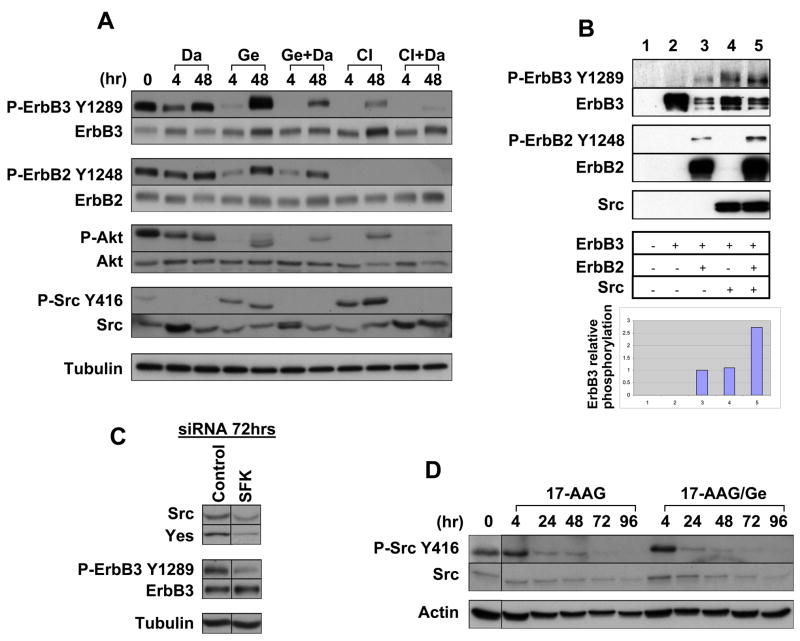Figure 2.
c-Src mediates ErbB3 and PI3K/Akt reactivation in the setting of ErbB TKI, and this can be prevented by 17-AAG. (A) Combination of c-Src and ErbB TKIs is more effective in inactivating ErbB3 and Akt. SKBR3 cells were plated in 6-well plates and treated with 1 μM gefitinib, 1.5 μM CI-1033, and 0.5 μM Dasatinib as shown and for the length of time indicated. (B) c-Src can effect ErbB3 activation independently and in cooperation with ErbB2. c-Src, ErbB2, and ErbB3 were overexpressed in CHO cells alone and in combination. ErbB3 phosphorylation was examined by western blotting and corrected for ErbB3 expression. (C) c-Src family kinase (SFK) knockdown decreases ErbB3 phosphorylation. SKBR3 cells were plated in a 12-well plate, and control, c-Src and Yes siRNAs were transfected (100 nM each). (D) 17-AAG inactivates c-Src alone and in combination with gefitinib. SKBR3 cells were treated for the indicated times with 1 μM 17-AAG or in combination with 1 μM gefitinib, and examined for c-Src activity.

